What does someone who works at Norman’s Rare Guitars bring on the road?
“It’s a loony bin.” That’s how Michael Lemmo describes Norman’s Rare Guitars, the coveted Los Angeles shop. Lemmo was tapped to join the store and eventually host their popular Guitar of the Day web series after Norm’s son Jordan spotted Lemmo jamming in the store and introduced him to his shop-owner dad. Norm kept in touch and eventually offered Lemmo a job, starting with his Lemmo Demo series of affordable guitars.
Lemmo toured through July with Allan Rayman. Ahead of their date at Nashville’s Basement East, PG’s Chris Kies caught up with the guitarist for some unofficial Lemmo demos.
Brought to you by D’Addario.Godzilla!
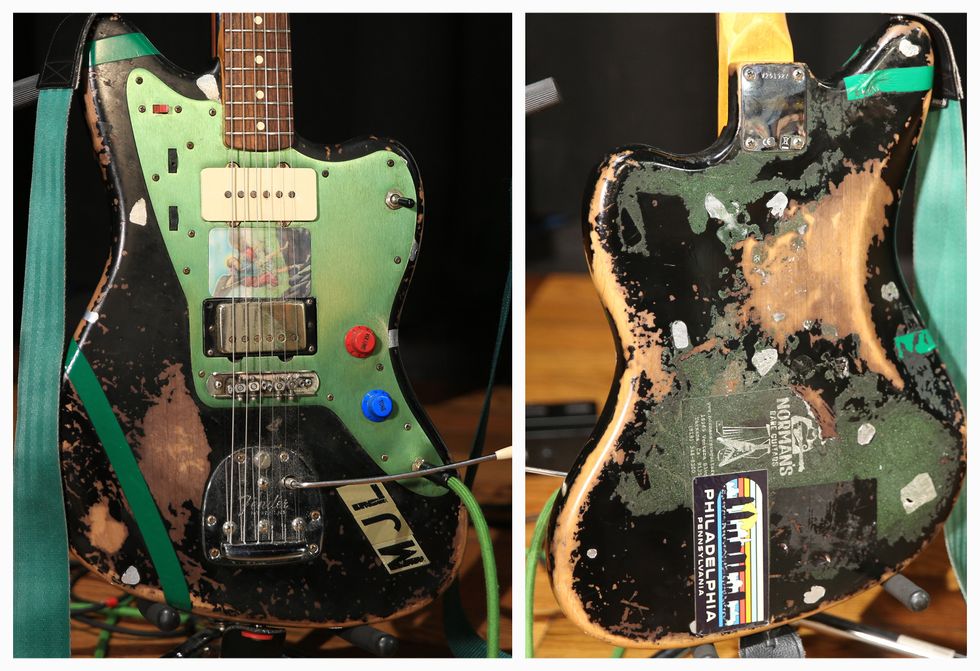
Lemmo got this Jazzmaster new in 2012, and its wear and tear is 100 percent organic—no relic job. Over time, Lemmo says, he “went to town” with it, starting with swapping out the factory bridge for a Mastery bridge, which holds it in perfect tune. He switched in the green anodized pickguard, and inspired by his guitar hero Eddie Van Halen’s red kill switch, he installed a red knob on the volume pot, then a blue one for the tone knob, to give it a Nintendo 64 vibe. Finally, a friend helped him pot a PAF humbucker in the bridge position. Lemmo runs D’Addario NYXL .011s on this dino.
Gift from the God

Tucked into the headstock is Lemmo’s prized pick, a gift from EVH himself. As random luck would have it, the famous guitarist began dating Lemmo’s friend’s mother during Lemmo’s first year of high school in Pennsylvania, and 14-year-old Michael had the opportunity to spend a couple hours talking guitars with Eddie one day. Van Halen gifted him this pick, which doesn’t stay in a glass case—Lemmo performs with it.
Low-End Evergreen
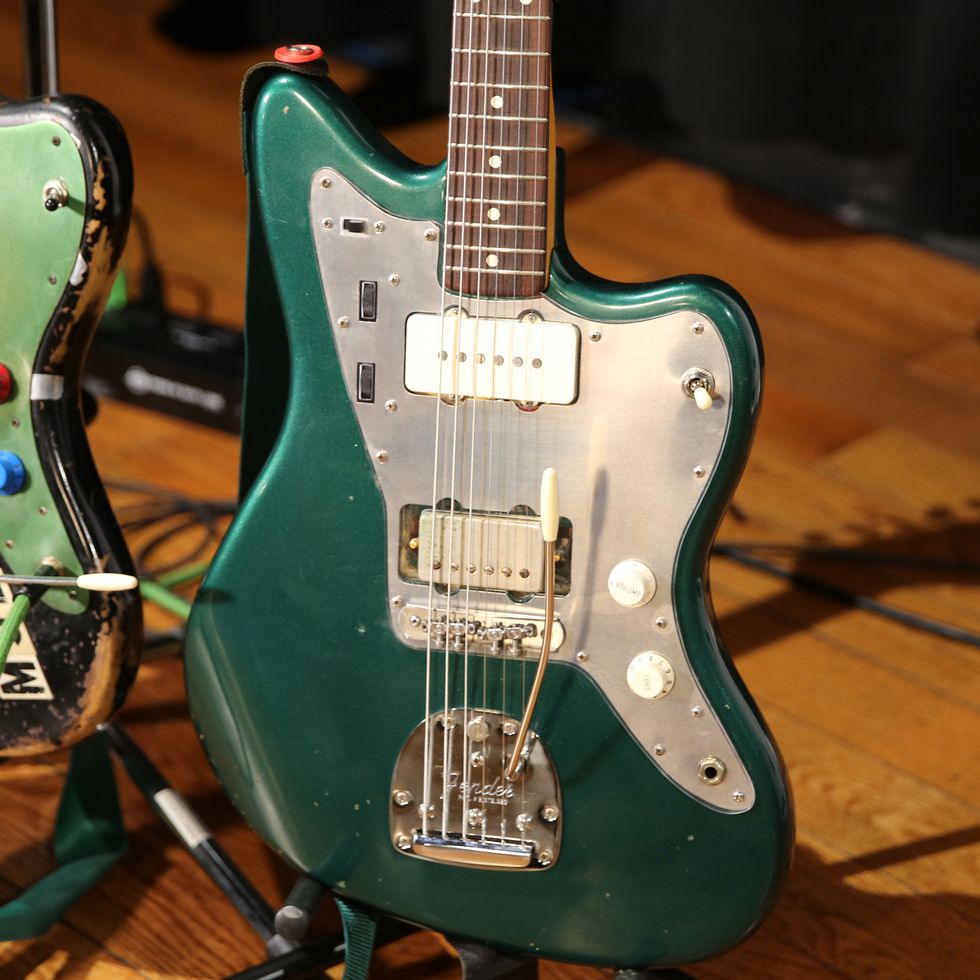
This backup Jazzmaster circa 2000 is set up to be a low-register, baritone-like guitar, with heavier-gauge strings and another PAF in the bridge. Lemmo leans on it to complement key changes and vocals in the lower register.
Base Camp
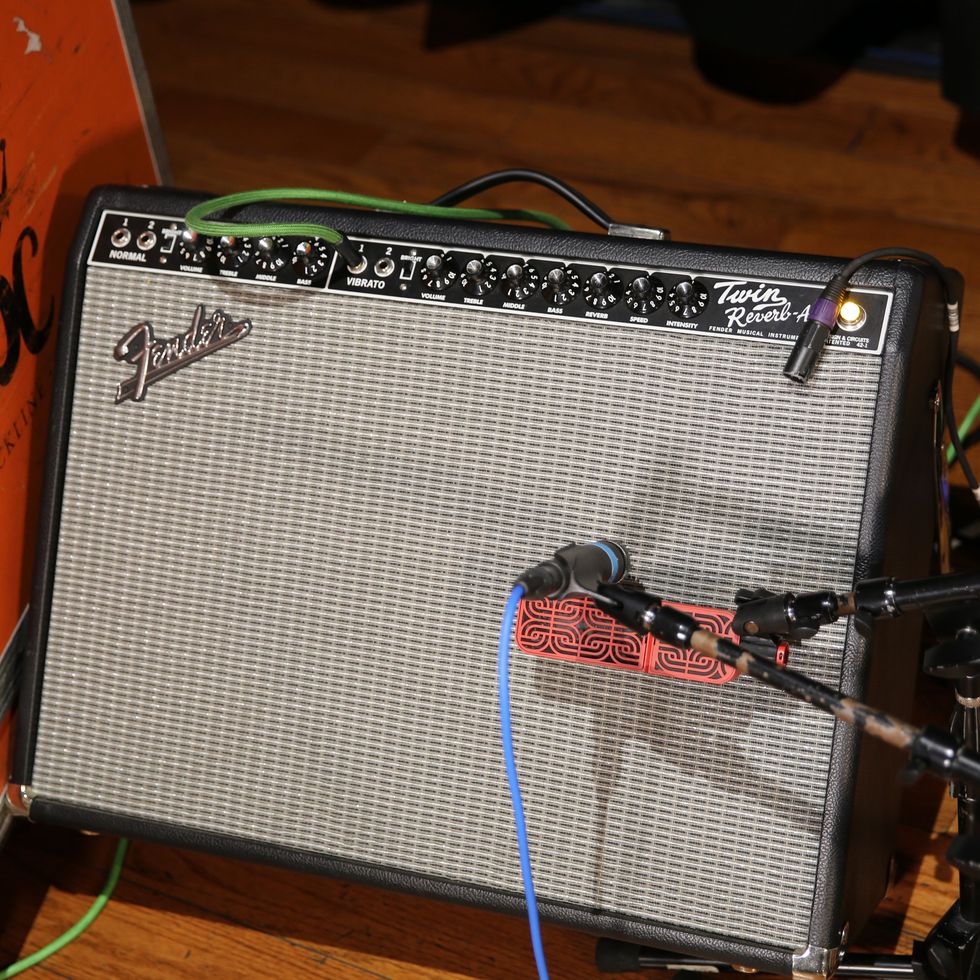
Lemmo likes a robust, clean base tone to build from on electric. At home, he usually plays through pre-1965 Fender amplifiers and trusts his pedals to give him all the tonal flexibility he desires. For this gig, he’s rocking a backline Fender Twin.
Simple Pleasures

Lemmo relies on his stomps for tone sculpting, but he doesn’t need much to get the job done. His signal hits a Korg tuner, followed by an Xotic EP Booster, Bearfoot FX Honey Bee OD, Red Panda Context, Boss DD-7, and TC Electronic Ditto. They’re all wired up to a trusty Truetone 1 Spot Pro CS7.





![Rig Rundown: Russian Circles’ Mike Sullivan [2025]](https://www.premierguitar.com/media-library/youtube.jpg?id=62303631&width=1245&height=700&quality=70&coordinates=0%2C0%2C0%2C0)




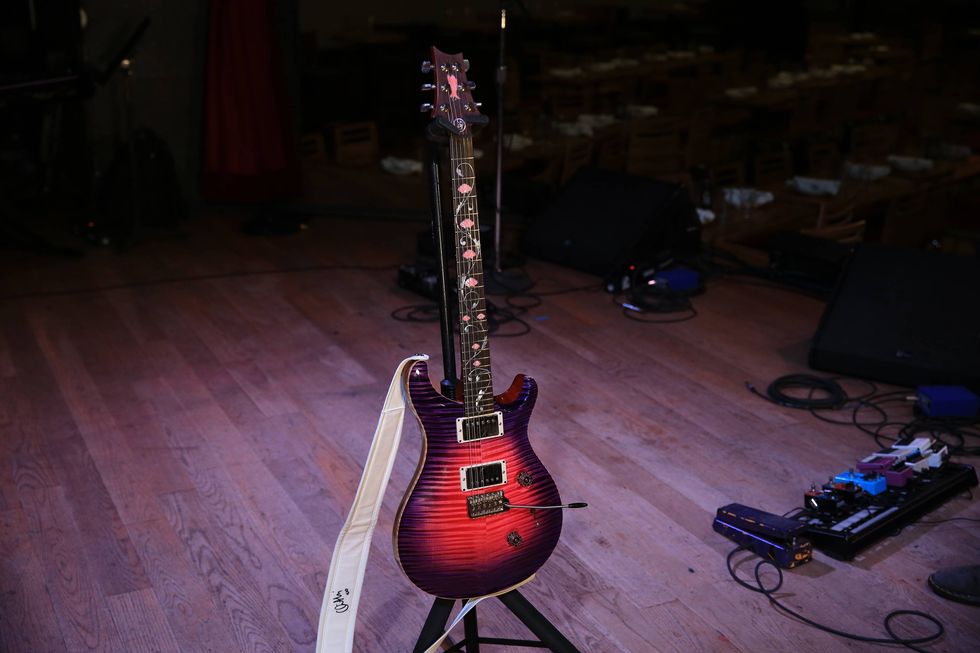
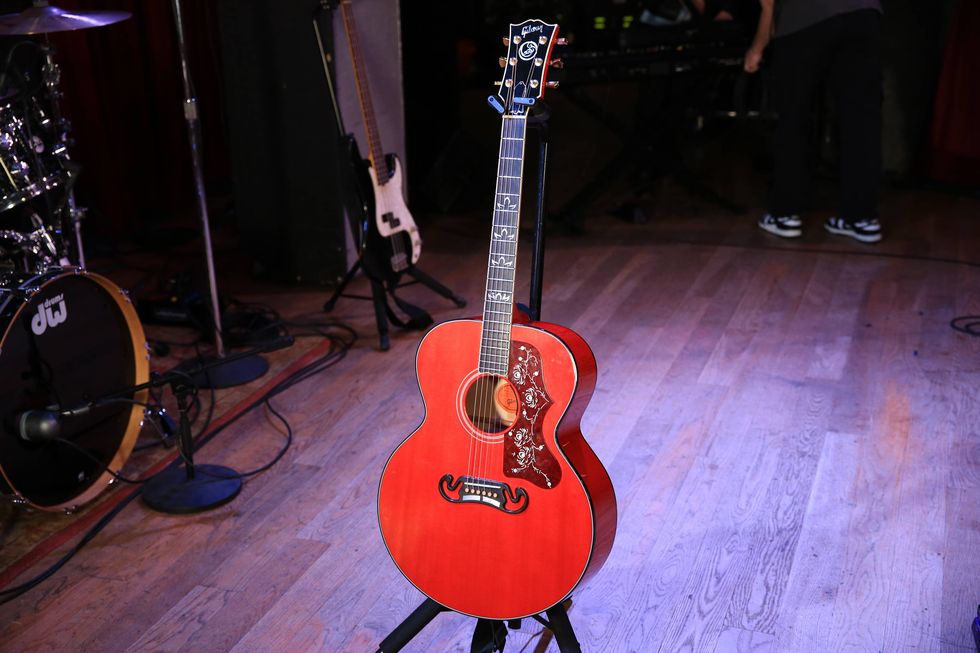
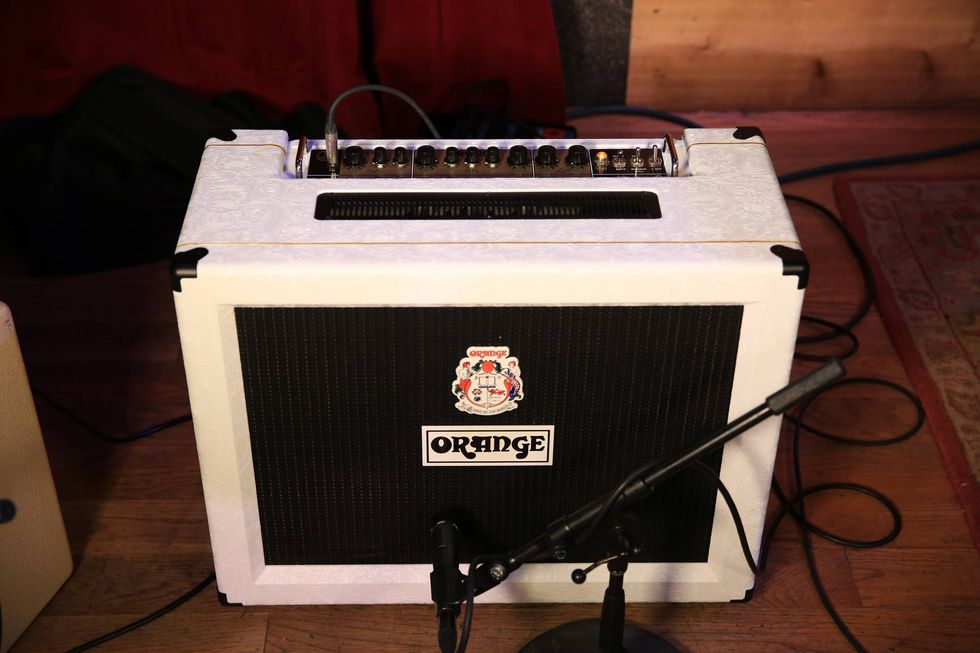
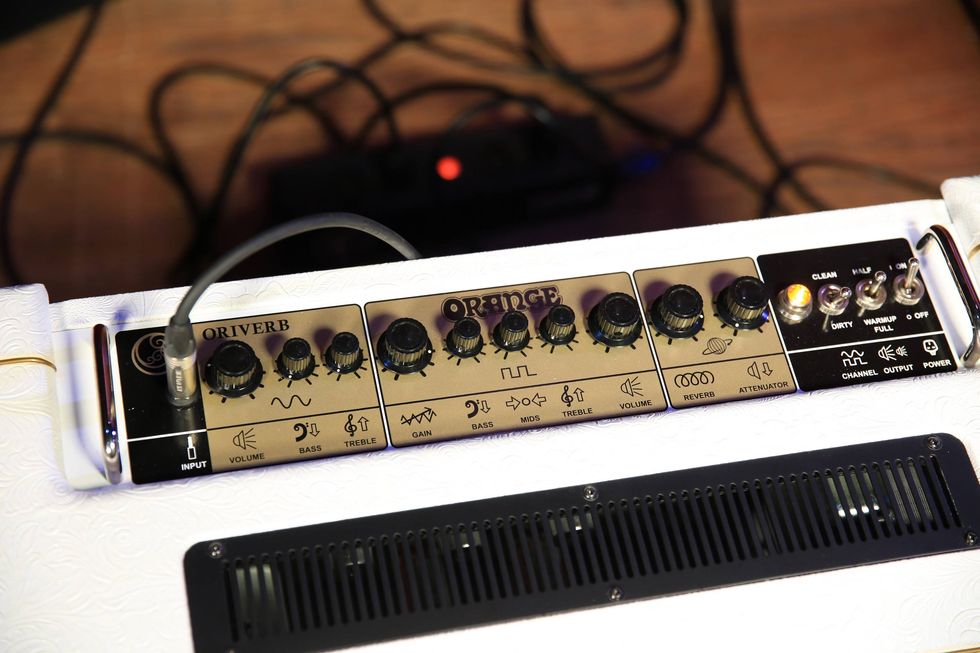
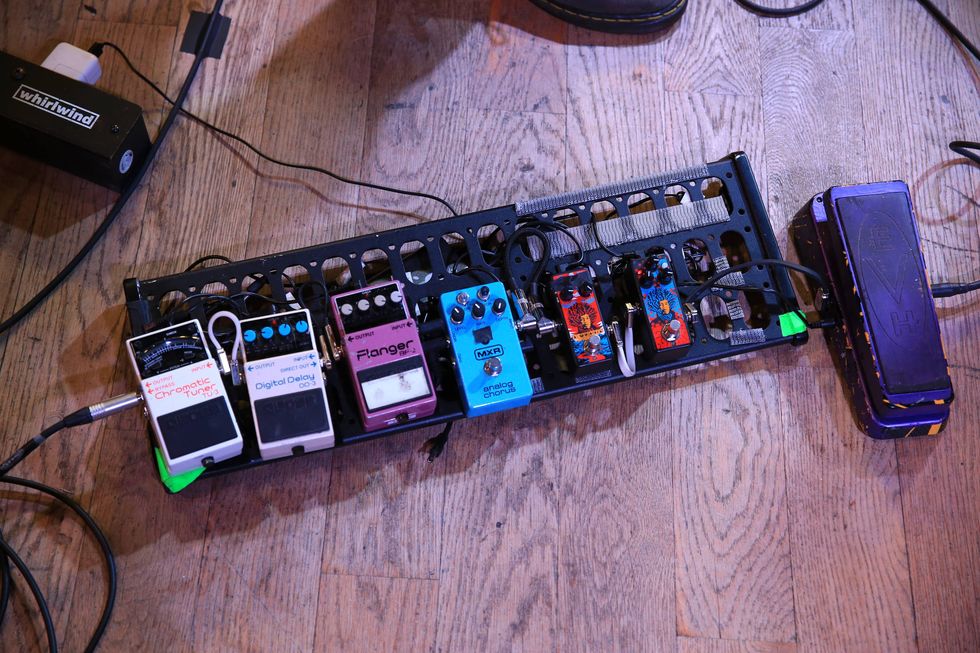







![Rig Rundown: AFI [2025]](https://www.premierguitar.com/media-library/youtube.jpg?id=62064741&width=1245&height=700&quality=70&coordinates=0%2C0%2C0%2C0)




















 Zach loves his Sovtek Mig 60 head, which he plays through a cab he built himself at a pipe-organ shop in Denver. Every glue joint is lined with thin leather for maximum air tightness, and it’s stocked with Celestion G12M Greenback speakers.
Zach loves his Sovtek Mig 60 head, which he plays through a cab he built himself at a pipe-organ shop in Denver. Every glue joint is lined with thin leather for maximum air tightness, and it’s stocked with Celestion G12M Greenback speakers.

















![Devon Eisenbarger [Katy Perry] Rig Rundown](https://www.premierguitar.com/media-library/youtube.jpg?id=61774583&width=1245&height=700&quality=70&coordinates=0%2C0%2C0%2C0)






